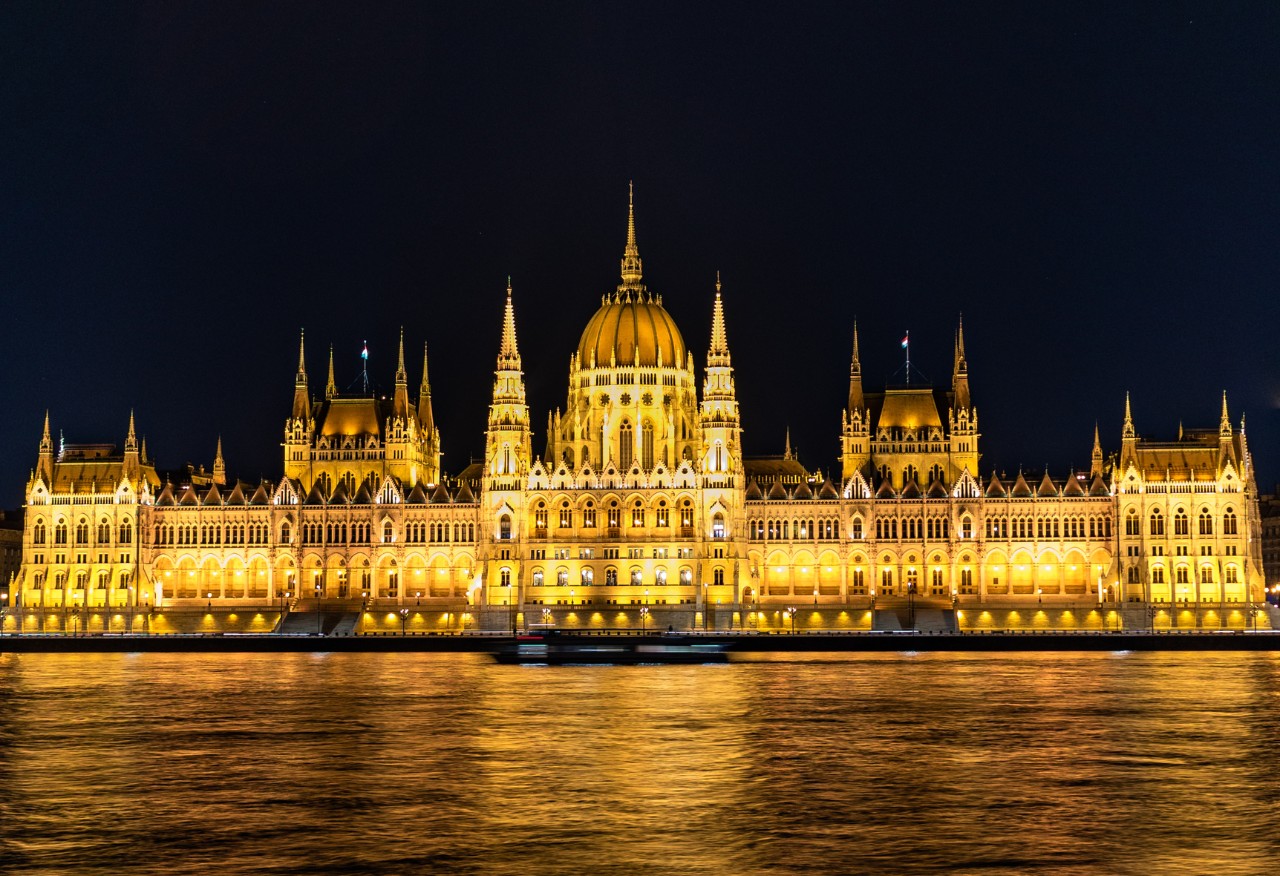
The Danube River weaves through 10 countries — a historic haunt of Europe’s greatest artists and composers. Yet, Budapest, Hungary, appears again and again, one of the most painted and most photographed, living up to its nickname as the “Queen of the Danube.”
When travelers plan trips to the city, they have to choose a side — Buda, or Pest. While the city is known by its combined name, the two sides have very distinct characters. Buda, which sits on the west of the river, is hilly, quiet and green, home to more families and expats. Pest, on the other hand, is flat, gritty and vibrant — a place where bars and kebab shops stay open until late, sharing the streets with Michelin-starred restaurants and countless museums, theaters and attractions. The two sides are divided by the Danube.
Lined by ornate and historic buildings illuminated by their golden lights, the riverfront is picturesque. Generations of artists, poets and writers have congregated beneath the honeyed glow of a Budapest night, scribbling in its historic cafés and bars. Each of these famous buildings is impressive, enticing travelers for the architecture alone.
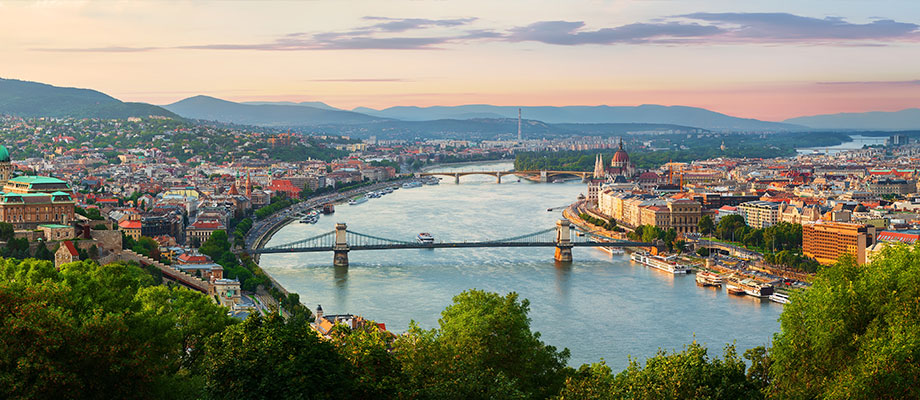
History & Architecture
While Budapest is celebrating its 150th anniversary this year, Hungary is over 1,000 years old and has a complicated history. It has been led by Romans and Huns, Magyars and Ottomans, fascists and the USSR. All are remembered — some with honor, others with scorn.
The most revered leader is St. Stephen, the first King of Hungary. He thwarted pagan tribes, rejected a merge with Byzantium, and brought Christianity to the nation. He became a saint when his body, which had been entombed in a marble sarcophagus since his death in 1038, was moved during later turbulent times to protect the remains.
When the sarcophagus was opened, the king’s body had decomposed as usual, but his right hand had mummified. Now known as the Holy Right, viewing the hand is one of the draws of a visit to St. Stephen’s Basilica, which is a good place to start exploring.
The neoclassical basilica, which took over 50 years to build, accommodates 8,500 people and, while wonderful to visit year-round, is especially enchanting during the holiday season when the Christmas market opens in the square.
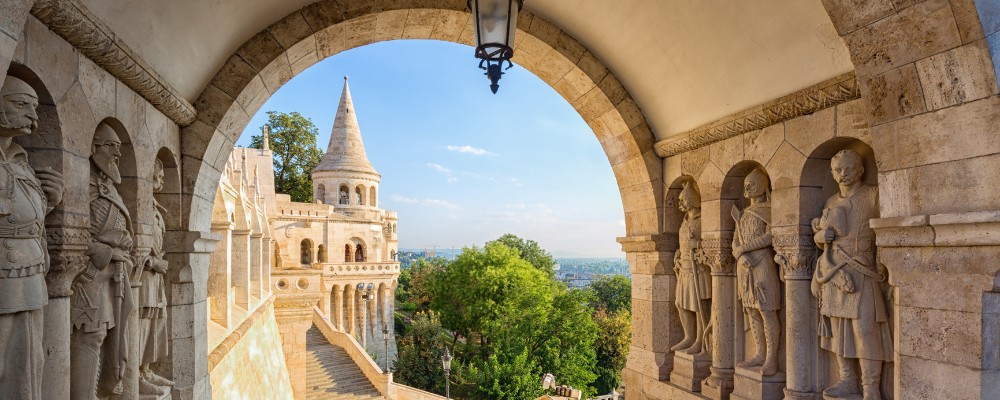
Fisherman’s Bastion
Another of the most recognizable buildings in Budapest sits on the Pest riverbank — Hungary’s picturesque Parliament building. From the outside, passers-by can try to count the 365 towers atop the third largest parliament building in the world. For visitors curious about the inside, a 45-minute tour can be booked through the Parliament Visitors Centre to see the Holy Crown and climb the 96 steps of the granite and gold-lined grand staircase.
Buda Castle, as the name implies, sits on the Buda side of the river. It’s imposing, crowning a hill overlooking the Danube. A royal palace since the 13th century, the castle isn’t just one building, but a complex. Inside, it houses the Hungarian National Gallery, the National Széchényi Library and the Budapest History Museum.
A visit to the castle isn’t complete without stopping by nearby Matthias Church, the location of multiple coronations, and Fisherman’s Bastion, a decorative fortification with seven turrets and spectacular views of the Danube. It marks the spot where the Mongols gave up on conquering Europe.
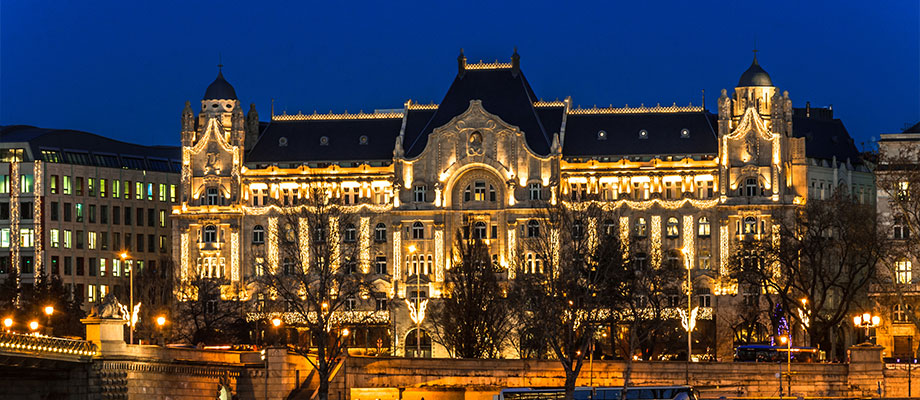
Hotels
Choosing your stay in Budapest all comes down to your neighborhood of choice — each of the city’s districts offers travelers a different experience. If you’d prefer to stay closer to the calm cobblestones of Buda, sleep at the Four Seasons Hotel Gresham Palace Budapest. The regal hotel is a stone’s throw from the parliament building, and a short walk away from many of Buda’s best sites. For fans of historic hotels and immaculate architecture, the Corinthia is the obvious choice. Its 19th-century facade is grand, its domed interior even more so.

Delicious Hungarian Cuisine
Hungary’s best-known dish is Hungarian goulash. The beef stew made with heaped tablespoons of paprika is available at restaurants across the city. Hungarian cuisine is also pork-heavy, with the native Mangalica pigs providing the city with an abundance of smoked, roasted and dried delights. For some updated Hungarian food, try Incognito or Café Vian, both on the pedestrianized Liszt Ferenc tér.
If you’re looking for a tipple to accompany your hearty meals, you’re in luck — Hungary is one of the world’s oldest wine-producing countries. Its six wine regions, including 22 distinct wine districts, have gained international attention in recent years. You can sample a few of their products in one of the city’s many wine bars. Try Tasting Table, with its brick, wine-cellar-like atmosphere and knowledgeable servers, or lively Kadarka.
The best time to taste the variety is in September, when Buda Castle hosts the annual Budapest Wine Festival. Hungarian alcohol isn’t all about wine, though — pálinka is a must-try, too. It’s a brandy created with fermented fruits, most traditionally brewed using plums, cherries, and apricots.
Stop by the Pálinka Experience Museum, Shop, and Bar to try some of their 100 types of pálinka. You can always find it on offer, too, at the city’s famous ruin bars. This phenomenon began in the early 2000s, when developers began buying property in the Jewish District. During the war, these were semi-destroyed by regular bombings. They were never repaired. Now, new life is being breathed in as they house eccentric bars, including the famous Szimpla Kert.
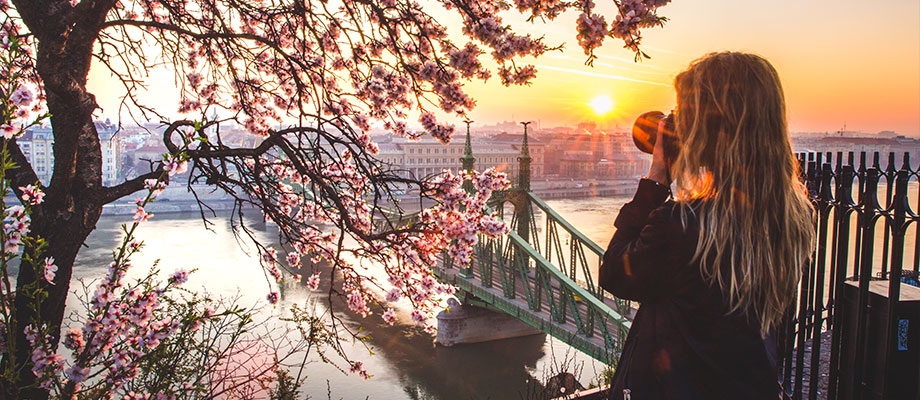
Essential Experiences
Each season offers a different experience in Budapest. During the Christmas period, its traditional markets overflow with revelers and festive sweet treats. In fall, you’ll find autumnal festivals; in summer, streets filled with al fresco drinkers sipping Hungarian beers and wines. But it’s in the spring, after a long winter of early sunsets and bundling up, that the city comes alive.
Avoid the high season by traveling in spring, when the weather is temperate, but the crowds have yet to arrive. The main airport, Ferenc Liszt (BUD), is well connected internationally and there’s a direct bus to the city. The Metro, trams and buses are easy to use and run often.
Tickets can be purchased at machines in stations and at many stops. While Budapest is a very walkable city, visitors can also rely on its trusty public transport. Budapest’s underground is UNESCO-designated — the oldest underground railway in continental Europe. In summer, Budapest’s official transportation company offers public ferry boats along the river, and you can just hop on Tram #2 for a tour along the waterfront.